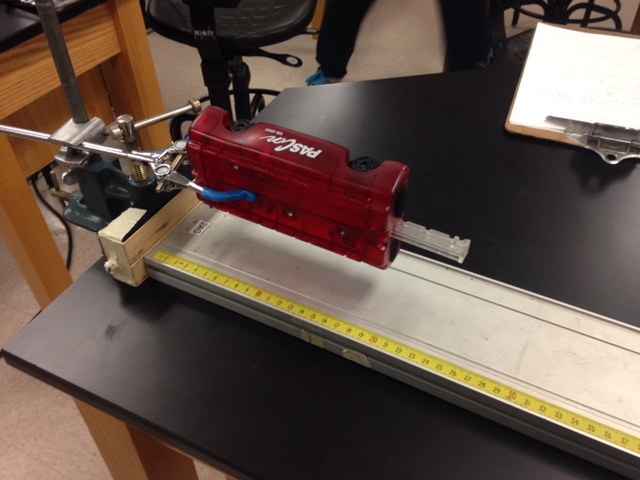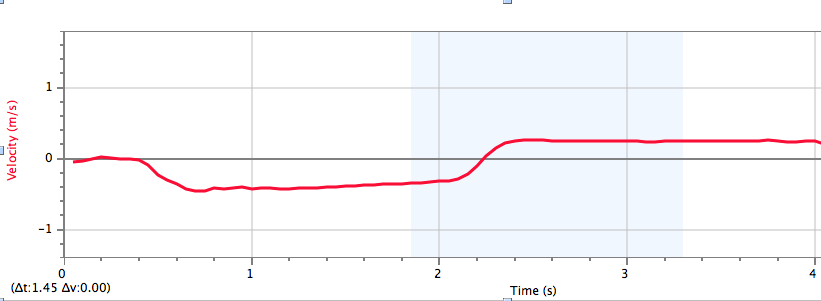Purpose:
The purpose of the lab was to find the relationship between the moment of inertia, frictional torque, and acceleration in a disk and cylindrical system.
Apparatus:
This lab contains two different apparatuses for two different experiments. The first consisted of a metal disk with two cylinders attached to each side as seen below. The disk and cylinders spin freely. A camera is setup in a position to clearly record the movement of the system when in motion.
The second apparatus consists of the last apparatus with the addition of a ramp and a cart. The cart is connected to the system with string and causes it to spin as it moves down the ramp.
Experiment:
Our first objective is to measure the dimensions and mass of our apparatus using various calipers.
Disk thickness = 14.7 millimeters
Disk diameter = 20.05 centimeters
Cylinder thickness = 5.25 centimeters
Cylinder diameter = 31 millimeters
Mass of system = 4.615 kilograms
The next step is to find the moment of inertia of the system. In order to achieve this the moment of inertia of the disk and two cylinders must be added together. Since both are disks in technicality we will use the equation for the moment of inertia of a disk [(1/2) MR^2] to find their values.
Idisk = (1/2) Mass * Radius^2
Icylinder = (1/2) * (0.3364 kg) * (0.031 m)^2
Icylinder = 4.04 x 10^-5
Icylinder = (1/2) * (3.94 kg) * (0.10025 m)^2
Icylinder = 1.979 x 10^-2
Our next goal is to find the frictional torque of the system when it is being spun. In order to do this we must find the angular deceleration of the apparatus using a camera. By connecting the camera to a laptop and opening logger pro we are able to place points on the spinning system as it slows down. Once enough points are generated, such that its deceleration can be fairly accurate, we can construct a position vs time graph of the spinning system.
By taking a linear fit of the graph we gain an estimated value of the angular deceleration which in this case is 0.08175 rad/s^2. Using this value and the value of our systems inertia calculated in the previous step we can find the value of the frictional torque using the equation:
Torque = Inertia * angular acceleration
Torque = [(4.04 x 10^-5) + (1.979 x 10^-2)] * -0.08175 rad/s^2
Frictional torque = -0.0161 Newtons
This concludes the first experiment.
The next experiment involves our second apparatus which includes the system of the previous experiment with the addition of the ramp, string, and cart.
Our first objective is to find the time it would take the cart to travel down the ramp if it were connected to the apparatus. The dimensions and mass of the cart and ramp are given as 500 gram cart, 1 meter long track, and 40 degree angle between the track and the ground. Beginning with a free body diagram and by using our known equations for rotational movement and their respective values, we calculated the estimated time and acceleration as seen below:
The values calculate were as follows:
Acceleration = 0.0254 m/s
Time = 8.87 s
Now that a prediction has been made we conduct the experiment to compare the theoretical value with the experimental value to conclude the experiment. The values for time that we recorded were as follows:
Time 1 = 8.95 s
Time 2 = 9.05 s
Time 3 = 9.52 s
Conclusion:
Our values for the actual times and theoretical value slightly very mainly because the human eye (our eyes) cannot observe the exact time the cart begins its decent. Overall the experiment was a success.










.png)
.png)





















.png)


















